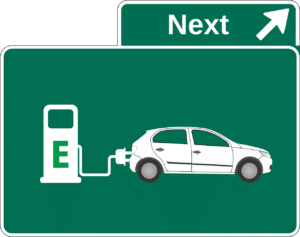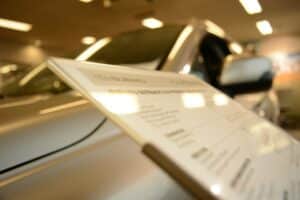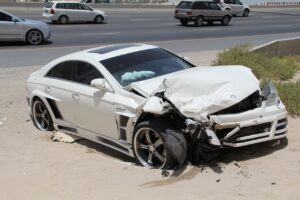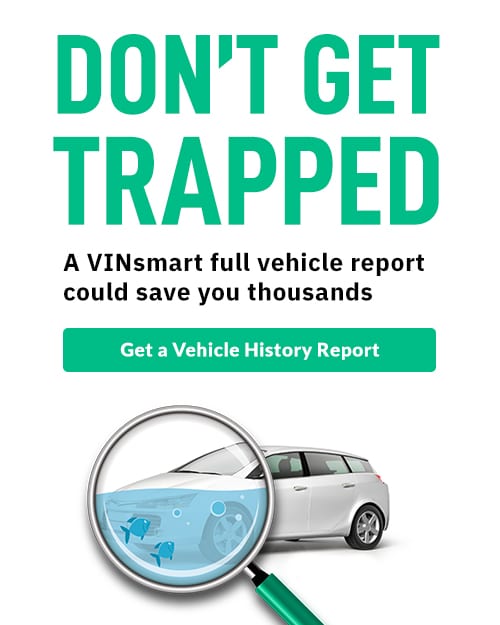
Buying a used car can be exciting and scary at the same time. You are excited that you are getting something new to you, but at the same time, you don’t want to get scammed or ripped off. Think about it, you buy a used car that seems great, but months down the road, the car says, “Pull over, check engine.” I’ve had this happen when buying an undisclosed flooded car with electrical issues.
Here are ten things to look out for when buying a used car:
Check The Dash
Start the car and check the dashboard. Are there any lights on like the check engine, brake light, or airbag light? Is the TPMS light on? Anything illuminated should be explained and further verified by an independent party. You can actually bring your own personal OBDII Scanner to check for such codes if you’re comfortable with the software.
Check The HVAC System
Once the car is started, set the A/C to its highest setting possible, and let it run as you check over the rest of the car. Once you’re finished checking over the car you can check to see if the A/C is still blowing cold. Weak or poor performing systems won’t be able to continually blow cold air while the car sits there. Be sure to check the heater as well before you wrap up your test drive. If the car can’t produce proper heat that may be an indication that the vehicle has a clogged heater core or could be low on coolant.
Check For Interior Issues
Now check over the interior features. Turn the radio on and check the speakers. If the vehicle has Bluetooth connectivity check to ensure it functions properly too. Now check the door handles and locks both from the inside and outside and from all switches.Roll the windows up and down.
Check The Tires
The most vital concern before driving down the road is the condition of the tires. First, determine if they’re all the same brand. Owners who take good care of their car are willing to keep matching, high-quality tires on the car. Mismatched tires are a sure indication of a car that has seen corners cut where possible. In addition,check the date code on the tire. It will be found at the end of a string of digits called the DOT Code and features four numbers. The first two are the week the tire was made during the year. The second pair is the last two digits of the year they were made. So 1217 would mean that the tire was made in the 12th week of 2017.
Check For Water Damage
Look at the headliner for discoloration that may indicate water damage. Check the floorboards as well for changes in the color of the carpet. Often times the front passenger side floorboard will be wet if the heater core has begun to fail. In addition, check throughout the trunk where water damage is often found.
Check For Body Damage
Take a look at the body panels around the entire car. They should be uniform in fit and color. This is also a good time to turn on all the lights and flashers to check for burnt-out bulbs and other lighting issues. Open the hood and look at the edges. The paint shouldn’t have any sort of creases or lines on the edges of the paint. Such things would indicate previous damage and repair.
Look For Leaks
Once the hood is open you’ll want to check for leaks with a flashlight. Look all over the engine compartment for oil, grease, and other fluids that are leaking from their components. Also,check that the fluids themselves are at the proper level. Typically there will be a fuse box under the hood as well and it’s important to check inside for water damage. Once you move the car look at the ground where it was parked for evidence of leaks. While the engine is running listen for ticking, tapping, or knocks. All could indicate problems and need to be checked out before the purchase.
Check The Suspension
Go to each corner of the vehicle and push straight down on it a few times and see how it responds. Good shocks,struts, and springs will stop the vehicle from bouncing quickly whereas failing components will allow the vehicle to continue to bounce. During the test drive listen for squeaks, pops, clicks, and other noises that indicate problems. Make sure you turn in both directions and feel for poor performing parts as you go over bumps or cracks in the road surface.
Test The Brakes
Before getting onto an open road check to ensure that the brakes are effectively stopping the car at parking lot speeds. Listen for grinding or screeching. If either is present, faster speeds are not advised. Once on the road testing the brakes should produce controlled and linear stopping power. The car shouldn’t dart to one side of the road or the other, which would indicate problems. If possible, find an incline where you can test the parking brake as well.
Test The Drive train
Don’t be afraid to put the car through its paces during the test drive. Cars should be driven smoothly and consistently at 35,55, and 75 mph. Listen for any kind of strange noises. Drive without the radio on so that you can hear the engine, transmission, and suspension and how it reacts to your inputs. If driving a manual transmission,check to ensure each gear engages smoothly without grinding. Once the drive is over make sure you listen to the engine before your final decision.
Lastly, Check the vehicle history report!
Are you a car dealer? Check out our dealer program!
Did you know vehicle history reports increases the likelihood of a purchase by 90%? Build that trust with VINsmart vehicle history reports!
Featured
Tags
Tags
Newsletter

Matthew Beasley
I am the Director of Marketing at VINsmart and previously worked for Cox Automotive in the marketing department designing advertisements for Autotrade and Mainhiem. I wouldn't call myself an "Automotive Enthusiast"; however, I do love marketing in the automotive industry. I've become an EV junky recently. I am a Tesla owner and have a new found love for advanced technology in automotive.




